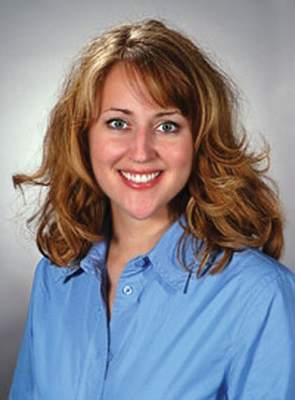User login
WASHINGTON – Now is the time to work toward defining alternative payment models that are effective for dermatology in terms of both outcomes and payment, Dr. Marta J. VanBeek said at the annual meeting of the American Academy of Dermatology.
Alternative payment models (APMs) will steadily displace fee-for-service models in the shift to paying for value over volume. Regulations formally defining APMs, which were created to replace the sustainable growth rate formula in the Medicare Access and CHIP Reauthorization Act, are expected in the coming months.
The key is to make sure that APMs accommodate the complexities of treating a variety of patients, Dr. VanBeek, a professor at the University of Iowa, Iowa City, said. A one-size-fits-all patients approach can disincentivize caring for complex patients and severe disease.
The start of designing and supporting a proposed APM is good data, she said. The AAD’s recently launched DataDerm tool is an important piece for measuring the quality aspects of care, and its use could be an active part of designing high-quality APMs.
If approached the right way, and led by physicians rather than payers, APMs could result in “a sea change in the way we deliver medicine and may bring the joy back,” rather than have the focus on worrying about what was put in the EMR and what was billed.
The key to designing and properly applying an APM is to understand and manage risk. If not accurately accounted for as it is under the current fee-for-service system, risk could put doctors out of business.
“In an alternative payment model, you’d be paid a fixed amount and ... you would still be paid the same amount regardless of whether more care was sought or required by the patients you serve ... so all the financial risk is on you,” Dr. VanBeek said.
Under this scenario, a single outlier patient could be a financial disaster for a solo practitioner seeing only a few thousand patients a year. Consider the wide difference in the costs of treating a patient with severe psoriasis versus one with mild psoriasis. The disparity is risk adjusted for today’s fee-for-service environment, but those differences could get lost in a bundled payment that regards all psoriasis patients as having identical needs.
Part of the challenge ahead is “to correct misconceptions that people may have and ... to design [the APMs] to prevent a potential disaster,” Dr. VanBeek said.
To illustrate her point, she referenced a payment bundle, a form of alternative payment model, that was developed for joint replacement surgery by orthopedic surgeons at her university hospital. The surgeons designed the bundle and negotiated the price. They found a win-win solution for surgeons, patients, and payers; and the “orthopedics department is further in the black than it’s ever been in decades.”
At certain hospitals around the country, though, CMS is now mandating Medicare-developed joint replacement payment bundles. “Those hospitals are panicking because they know that [the CMS payment bundle] is not financially viable,” Dr. VanBeek said.
The lesson to be learned: Do your homework and define your APM or a model that is unlikely to work may be forced upon you. “One hospital has an APM for joint replacement that was developed by doctors. The other has a model that was developed by CMS. One works really, really well. One does not,” she said. “And that’s my caveat in saying that [dermatologists] really need to get involved” in creating specialty-appropriate APMs.
Dr. VanBeek said she had no financial disclosures.
WASHINGTON – Now is the time to work toward defining alternative payment models that are effective for dermatology in terms of both outcomes and payment, Dr. Marta J. VanBeek said at the annual meeting of the American Academy of Dermatology.
Alternative payment models (APMs) will steadily displace fee-for-service models in the shift to paying for value over volume. Regulations formally defining APMs, which were created to replace the sustainable growth rate formula in the Medicare Access and CHIP Reauthorization Act, are expected in the coming months.
The key is to make sure that APMs accommodate the complexities of treating a variety of patients, Dr. VanBeek, a professor at the University of Iowa, Iowa City, said. A one-size-fits-all patients approach can disincentivize caring for complex patients and severe disease.
The start of designing and supporting a proposed APM is good data, she said. The AAD’s recently launched DataDerm tool is an important piece for measuring the quality aspects of care, and its use could be an active part of designing high-quality APMs.
If approached the right way, and led by physicians rather than payers, APMs could result in “a sea change in the way we deliver medicine and may bring the joy back,” rather than have the focus on worrying about what was put in the EMR and what was billed.
The key to designing and properly applying an APM is to understand and manage risk. If not accurately accounted for as it is under the current fee-for-service system, risk could put doctors out of business.
“In an alternative payment model, you’d be paid a fixed amount and ... you would still be paid the same amount regardless of whether more care was sought or required by the patients you serve ... so all the financial risk is on you,” Dr. VanBeek said.
Under this scenario, a single outlier patient could be a financial disaster for a solo practitioner seeing only a few thousand patients a year. Consider the wide difference in the costs of treating a patient with severe psoriasis versus one with mild psoriasis. The disparity is risk adjusted for today’s fee-for-service environment, but those differences could get lost in a bundled payment that regards all psoriasis patients as having identical needs.
Part of the challenge ahead is “to correct misconceptions that people may have and ... to design [the APMs] to prevent a potential disaster,” Dr. VanBeek said.
To illustrate her point, she referenced a payment bundle, a form of alternative payment model, that was developed for joint replacement surgery by orthopedic surgeons at her university hospital. The surgeons designed the bundle and negotiated the price. They found a win-win solution for surgeons, patients, and payers; and the “orthopedics department is further in the black than it’s ever been in decades.”
At certain hospitals around the country, though, CMS is now mandating Medicare-developed joint replacement payment bundles. “Those hospitals are panicking because they know that [the CMS payment bundle] is not financially viable,” Dr. VanBeek said.
The lesson to be learned: Do your homework and define your APM or a model that is unlikely to work may be forced upon you. “One hospital has an APM for joint replacement that was developed by doctors. The other has a model that was developed by CMS. One works really, really well. One does not,” she said. “And that’s my caveat in saying that [dermatologists] really need to get involved” in creating specialty-appropriate APMs.
Dr. VanBeek said she had no financial disclosures.
WASHINGTON – Now is the time to work toward defining alternative payment models that are effective for dermatology in terms of both outcomes and payment, Dr. Marta J. VanBeek said at the annual meeting of the American Academy of Dermatology.
Alternative payment models (APMs) will steadily displace fee-for-service models in the shift to paying for value over volume. Regulations formally defining APMs, which were created to replace the sustainable growth rate formula in the Medicare Access and CHIP Reauthorization Act, are expected in the coming months.
The key is to make sure that APMs accommodate the complexities of treating a variety of patients, Dr. VanBeek, a professor at the University of Iowa, Iowa City, said. A one-size-fits-all patients approach can disincentivize caring for complex patients and severe disease.
The start of designing and supporting a proposed APM is good data, she said. The AAD’s recently launched DataDerm tool is an important piece for measuring the quality aspects of care, and its use could be an active part of designing high-quality APMs.
If approached the right way, and led by physicians rather than payers, APMs could result in “a sea change in the way we deliver medicine and may bring the joy back,” rather than have the focus on worrying about what was put in the EMR and what was billed.
The key to designing and properly applying an APM is to understand and manage risk. If not accurately accounted for as it is under the current fee-for-service system, risk could put doctors out of business.
“In an alternative payment model, you’d be paid a fixed amount and ... you would still be paid the same amount regardless of whether more care was sought or required by the patients you serve ... so all the financial risk is on you,” Dr. VanBeek said.
Under this scenario, a single outlier patient could be a financial disaster for a solo practitioner seeing only a few thousand patients a year. Consider the wide difference in the costs of treating a patient with severe psoriasis versus one with mild psoriasis. The disparity is risk adjusted for today’s fee-for-service environment, but those differences could get lost in a bundled payment that regards all psoriasis patients as having identical needs.
Part of the challenge ahead is “to correct misconceptions that people may have and ... to design [the APMs] to prevent a potential disaster,” Dr. VanBeek said.
To illustrate her point, she referenced a payment bundle, a form of alternative payment model, that was developed for joint replacement surgery by orthopedic surgeons at her university hospital. The surgeons designed the bundle and negotiated the price. They found a win-win solution for surgeons, patients, and payers; and the “orthopedics department is further in the black than it’s ever been in decades.”
At certain hospitals around the country, though, CMS is now mandating Medicare-developed joint replacement payment bundles. “Those hospitals are panicking because they know that [the CMS payment bundle] is not financially viable,” Dr. VanBeek said.
The lesson to be learned: Do your homework and define your APM or a model that is unlikely to work may be forced upon you. “One hospital has an APM for joint replacement that was developed by doctors. The other has a model that was developed by CMS. One works really, really well. One does not,” she said. “And that’s my caveat in saying that [dermatologists] really need to get involved” in creating specialty-appropriate APMs.
Dr. VanBeek said she had no financial disclosures.
AT AAD 16

